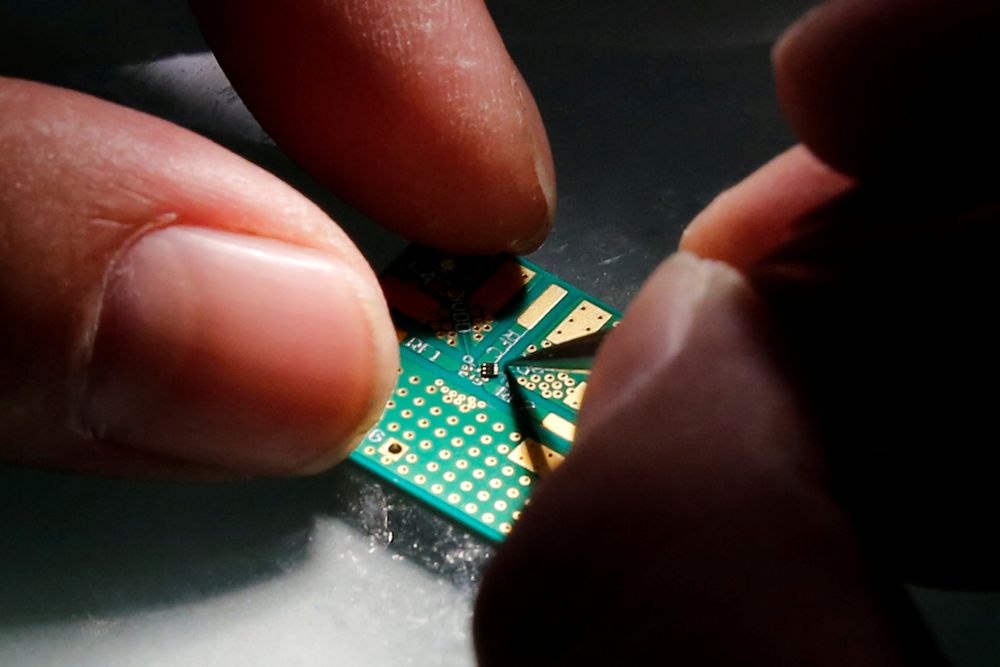KUALA LUMPUR, Jan 2 — Research firms anticipate a rebound in the semiconductor industry this year but cannot agree on the technology sector’s prospects due to an uncertain automotive sales outlook.
Kenanga Research, which maintains an “overweight” call on the sector, said there were potential turnaround signs for the sector given the improving outlook for both 5G connectivity and automotive segments.
It said in the third-quarter 2019 earnings season, the global top 10 outsourced semiconductor assembly and test (OSAT) players recorded aggregate revenue growth of one per cent year-on-year.
“While the growth is marginal, it is nonetheless a commendable feat given the choppy semiconductor industry this year. We interpret this as an early sign for a stronger rebound next year for OSAT players which are in involved in radio frequency,” the research firm said in a note today.
However, AmInvestment Bank retains its “neutral” outlook for the sector for the next 12 months due to “near-term uncertainty in orders clouding the outlook of some semiconductor firms.”
The automotive outlook remained soft for the next two years, which might lead to muted demand for the automotive semiconductor industry, it explained.
On the other hand, it noted that smartphone sales were anticipated to grow this year driven by demand for 5G phone models.
Kenanga Research said an upcoming flagship smartphone in September 2020 from a US company was expected to support 5G connectivity. While this may bring about more buying interest among customers, it was not expecting a huge jump in unit sales.
The research firm did not name the US company in its sector update, but there have been reports of Apple planning to introduce iPhone12 this year that will have 5G compatibility.
Kenanga Research opined that the OSAT players involved in radio frequency would likely benefit more compared with those that are solely focused on smartphone sensors.
“To a certain extent, the absence of Google Mobile Services in Huawei devices may also sway less tech-savvy customers towards Apple or Samsung to avoid the inconvenience of having to root or flash their devices,” it said.
On the US-China trade war, Kenanga Research said although the last wave of the tariff was recently called off, it did not change the fact that China still intended to be technologically self-sufficient.
“This will be driven by China’s tech-centric ‘Big Fund Phase II’, which will begin deployment end 2019, representing a 47 per cent jump from the allocation in Phase I,” it said.
The research firm said there were encouraging signs of recovery in major automotive markets like China and Europe and it saw D&O Green Technologies Bhd and KESM Industries Bhd as beneficiaries given their automotive-centric portfolio.
Meanwhile, AmInvestment Bank Bhd said moderate growth was expected in global semiconductor sales in 2020 and 2021.
The World Semiconductor Trade Statistics projected annual global semiconductor sales would decline by 12.8 per cent in 2019 to US$409 billion and increase by 5.9 per cent and 6.3 per cent respectively in 2020 and 2021, signalling a rebound with moderate growth.
While the “phase one” trade deal is expected to be signed by the US and China this month, AmInvestment Bank said it was still cautious as there might be more phased deals and negotiations might hit a pause with the US bracing for its presidential election in November.
AmInvestment, citing a September 2019 Gartner report, said the global smartphone market was expected to recover and grow by 2.9 per cent this year as a result of 5G adoption, after a 3.2 per cent global decline in the shipment of devices such as personal computers, tablets and mobile phones in 2019.
On the automotive semiconductor industry, AmInvestment pointed to S&P Global Ratings’ forecast of no revenue growth this year. The international rating agency projected the same performance in 2021 with all regions anticipated to face volume weakness except for China, which might see a modest rebound after 2021. — Bernama






















